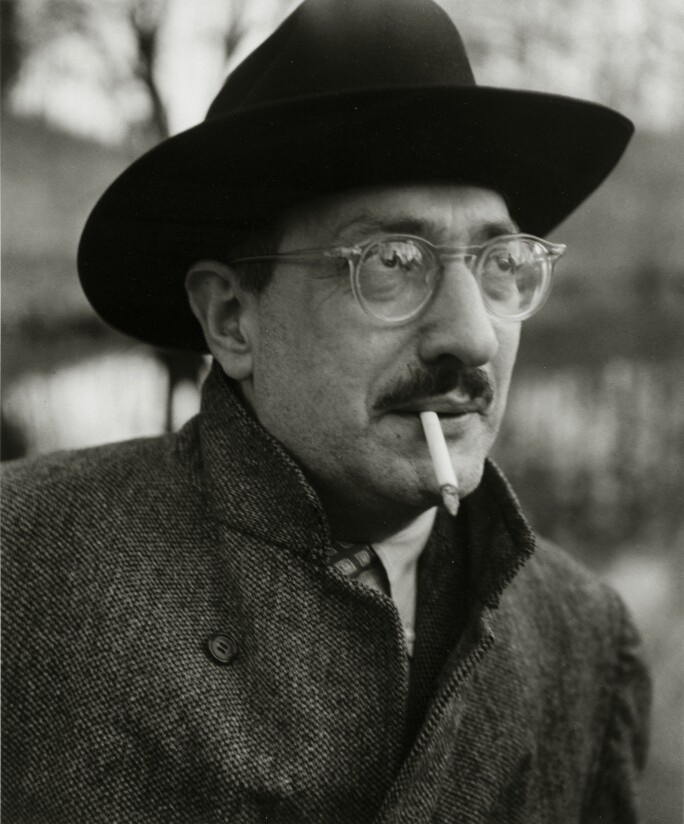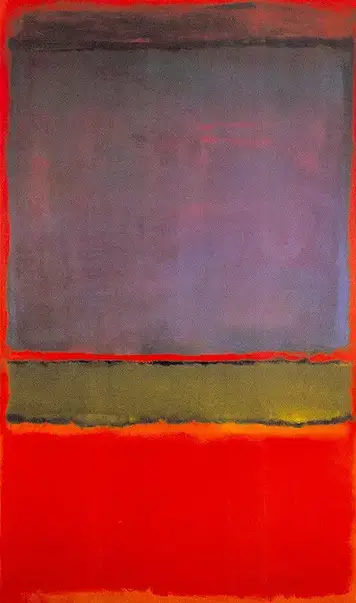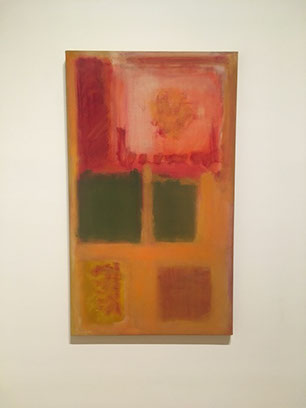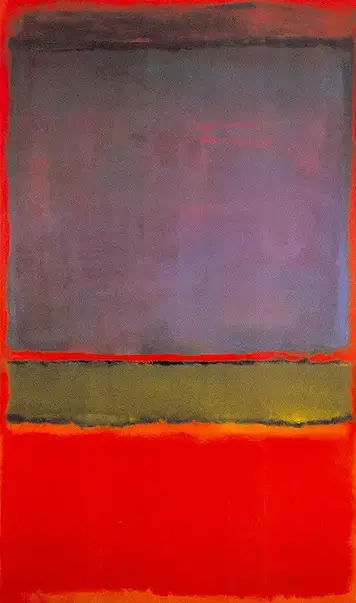Have you ever been mesmerized by a painting that seems to speak to your soul without saying a word? That’s the magic of Mark Rothko’s work, especially his masterpiece, No. 6 (Violet, Green, and Red). But before we dive into this enchanting piece, let’s get to know the man behind the canvas.
Who was Mark Rothko

Mark Rothko was a genius with a paintbrush, born in Latvia in 1903. He moved to the United States when he was just a kid and later became one of the most famous painters of the 20th century. Rothko’s paintings weren’t just about colors and shapes; they were about tapping into emotions and stirring something deep within the viewer’s heart.
FUN FACT: Mark Rothko, known for his large-scale abstract color field paintings, was deeply influenced by his early exposure to theater. Before becoming an artist, he briefly pursued a career in acting and even studied under the renowned theater director Max Reinhardt.
His Career
Rothko’s journey as an artist was nothing short of extraordinary. He started with surrealism and expressionism but soon found his own unique style. Picture this: large blocks of color stacked on top of each other, creating a kind of visual symphony that seemed to pulse with life. That’s what Rothko became known for – his ability to make colors dance and sing on the canvas.
As he honed his craft, Rothko developed what would become his signature style: color field painting. This approach involved large expanses of color, often devoid of any recognizable forms or figures. Instead, Rothko used color to evoke emotions and create immersive experiences for viewers.
What is happening in No. 6 (Violet, Green, and Red)?

| Artist | Mark Rothko |
| Date Created | 1951 |
| Medium | Oil on canvas |
| Genre | Abstract Expressionism |
| Period | 20th Century |
| Dimensions | 238.8 x 145.1 cm (94 x 57 in) |
| Series/Versions | Part of Rothko’s color field paintings |
| Where Housed | Museum of Modern Art (MoMA), New York |
Now, let’s talk about No. 6 (Violet, Green, and Red), painted in 1951. This painting is like a doorway into another world. Imagine three big rectangles of color – violet, green, and red – floating on a canvas. They’re not just colors; they’re emotions frozen in time. The way they blend and blur together is like watching a dream unfold before your eyes.
When you stand in front of No. 6, it’s like being transported to another realm. The colors seem to vibrate with energy, pulling you in and wrapping you up in their warmth. Even though it’s just rectangles on a canvas, there’s something incredibly powerful about the way Rothko arranged them. It’s like he’s whispering secrets to you through the language of color.
Analysis of No. 6 (Violet, Green, and Red)
Okay, let’s break it down. No. 6 is all about the vibes it gives off. The colors seem to vibrate with energy, pulling you in and wrapping you up in their warmth. Even though it’s just rectangles on a canvas, there’s something incredibly powerful about the way Rothko arranged them. It’s like he’s whispering secrets to you through the language of color.
At first glance, No. 6 may seem simple – just three blocks of color stacked on top of each other. But the more you look at it, the more you realize there’s so much more going on beneath the surface. Rothko was a master at creating depth and dimension within his paintings, using subtle variations in hue and tone to draw the viewer in.
The colors themselves are rich and vibrant, yet there’s a sense of serenity and calm that pervades the painting. It’s like Rothko was trying to capture a moment of perfect stillness amidst the chaos of the world. And in doing so, he invites us to pause, to breathe, and to simply be.
Interesting Facts
Rothko wasn’t big on titles. He liked to let his paintings speak for themselves. That’s why No. 6 doesn’t have a fancy name – just a number and some colors. It’s like he wanted you to come up with your own story.
Have you ever stood in front of a painting and felt like you were being swallowed whole? That’s what Rothko wanted. He painted his pieces big because he wanted you to feel them, not just see them.
Rothko was a perfectionist. He would spend hours tweaking the colors and shapes in his paintings until they were just right. No. 6 is a perfect example of his attention to detail and his dedication to capturing the essence of emotion on canvas.
Artwork Spotlight: No. 10 (1949)

“No. 10 (1949)” is a masterwork of Mark Rothko’s signature style, which consist of stacking blocks of bursting color that seems to beat with life. This huge out-of-the-world painting gives the viewer permission for total immersion, evoking feelings of suspension and authenticity which are typical of Rothko.
Frequently Asked Questions
How much is No 6 Violet Green and Red by Mark Rothko worth?
Mark Rothko’s ‘No. 6 (Violet, Green, and Red)’ fetched an astonishing $186 million at a Christie’s auction in 2014. This masterpiece, alongside the works of de Kooning, is widely recognized as a quintessential example of abstract expressionism.
Why are Mark Rothko so expensive?
Since the 1950s, he has held numerous solo exhibitions in galleries across the US, Japan, Spain, the Netherlands, and more. His paintings have garnered admiration and are highly coveted by collectors. Rothko was among the distinguished guests at the inauguration of US President John F. Kennedy in 1961.
Conclusion
In the end, No. 6 (Violet, Green, and Red) isn’t just a painting; it’s an experience. It’s about losing yourself in a world of color and feeling, where words aren’t needed because the painting speaks for itself. So next time you find yourself in front of a Rothko, take a moment to listen. You might just hear something extraordinary.













